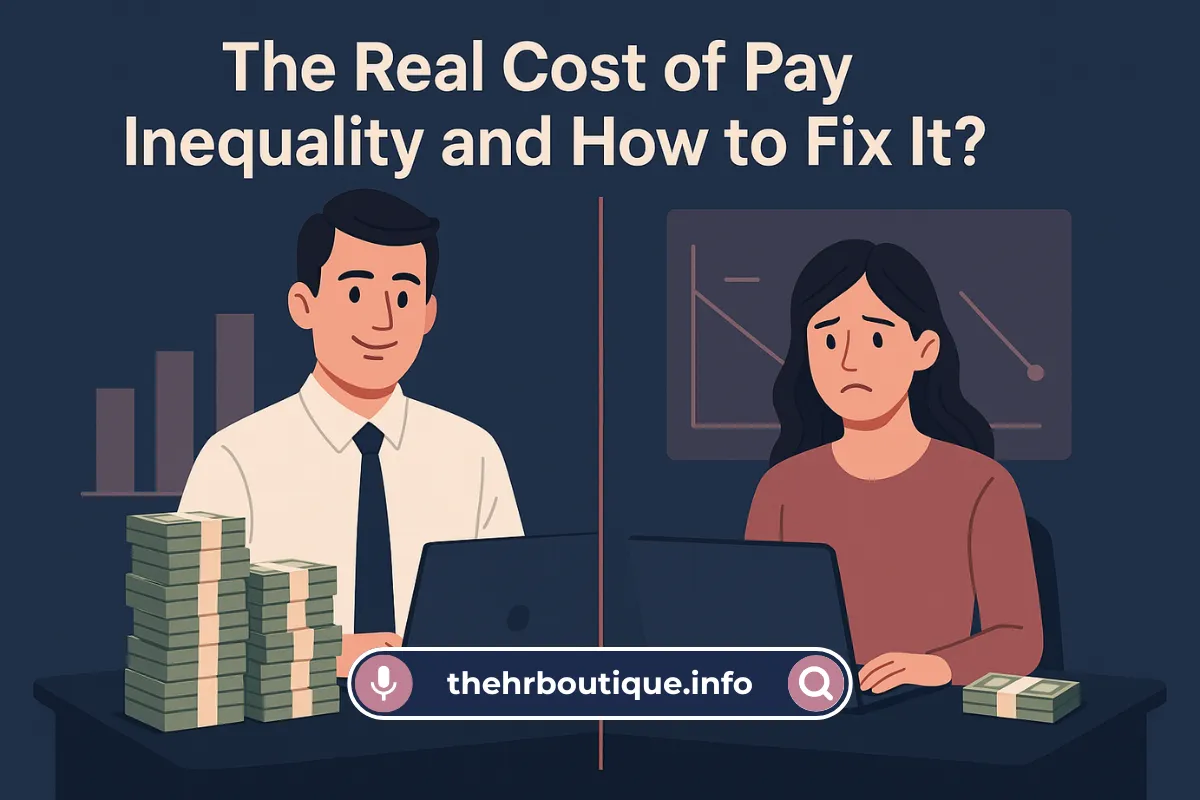Let’s be real – nobody likes talking about pay audits. They sound like some corporate snooze-fest. But here’s why you should care: if your team finds out Bob in accounting makes 20% more for the same job, you’ve got a mutiny on your hands.
Why Fair Pay Actually Matters to Real People?
Picture this: Sarah and Dave do the same job. Same hours, same results. But Dave’s paycheck is fatter because he played golf with the boss. How would you feel if you were Sarah? Exactly.
Fair pay isn’t about policy – it’s about:
- Keeping your best people (they’ll walk if they feel cheated).
- Sleeping at night (no one wants to be that boss).
- Avoiding the awkward (imagine explaining pay gaps to HR).
“Pay fairness is like plumbing – nobody notices until it’s broken, and then it’s a mess.”
Why Software Alone Won’t Cut It?
Sure, you can run some fancy algorithm to check pay gaps. But computers don’t get that:
- Maybe Lisa deserves extra because she trains all the new hires.
- That time Mark saved the company $50K should count for something.
- Remote workers in Iowa shouldn’t earn less just because it’s cheaper to live there.
The human stuff that matters:
✔ Actual job performance.
✔ Extra responsibilities nobody wrote down.
✔ That one employee who always fixes the printer.
How to Actually Do This (Without the HR Jargon)?
Step 1: Get Your Numbers Straight
Grab all the pay data – salaries, bonuses, even the Starbucks gift cards from last Christmas. Compare:
- Who does what job?
- How long have they been doing it?
- Who’s killing it vs. who’s just coasting?
Step 2: Play Detective
Look for weird gaps where:
- Two similar employees have very different pay.
- Certain groups always seem to earn less.
- Some departments pay way more for no clear reason.
Step 3: Ask the Dumb Questions
“Hey, manager, why does Jim make $10K more than Pam when they do the same work?”
If the answer is “Uhh…” – you’ve found a problem.
Step 4: Fix It (For Real)
No corporate lip service. Actually:
- Give raises where needed.
- Stop lowballing new hires.
- Make promotions fair.
Pro Tip: Do this every year – pay gaps creep back like weeds.
The Real Reasons Pay Gets Messy
We like to think we’re fair, but these things happen:
1. The “Good Ol’ Boy” Effect
Sorry, but it’s true. The boss’s fishing buddy often gets better raises.
2. The Quiet Worker Trap
The squeaky wheel gets the raise – even if others do better work quietly.
3. The Starting Salary Hole
Lowball someone’s first offer, and they’ll never catch up.
4. The “We Don’t Talk About Pay” Problem
Secrecy lets unfair pay hide for years.
How to Audit Pay Without Putting Everyone to Sleep?
- Make it regular – Like dentist visits, but less painful.
- Get multiple eyes on it – HR + managers + someone who’ll tell the truth.
- Write down reasons – “Because I like him” isn’t a valid reason.
- Train managers – Most don’t mean to be unfair; they just need help.
- Be honest about findings – Employees can smell BS.
When You Find Problems (And You Will)?
Here’s what works:
- Adjust pay now – No “we’ll fix it next year”.
- Backpay if possible – That $5K gap from 2018? Make it right.
- Change how raises work – Ditch the “who complains loudest” system.
“Fixing pay gaps is like apologizing – doing it late is better than never, but doing it right matters.”
What Leaders Need to Do Differently?
This isn’t an HR problem – it’s a leadership test. You need to:
- Talk money openly (scary, but necessary).
- Budget for fixes (this isn’t free).
- Reward fair managers (promote the ones who get it right).
Bottom Line:
Fair pay isn’t about being nice – it’s about running a business where people want to work. And that’s worth the awkward conversations.
Ever seen pay unfairness up close? (We all have.) What worked to fix it? Hit reply – let’s swap war stories.





